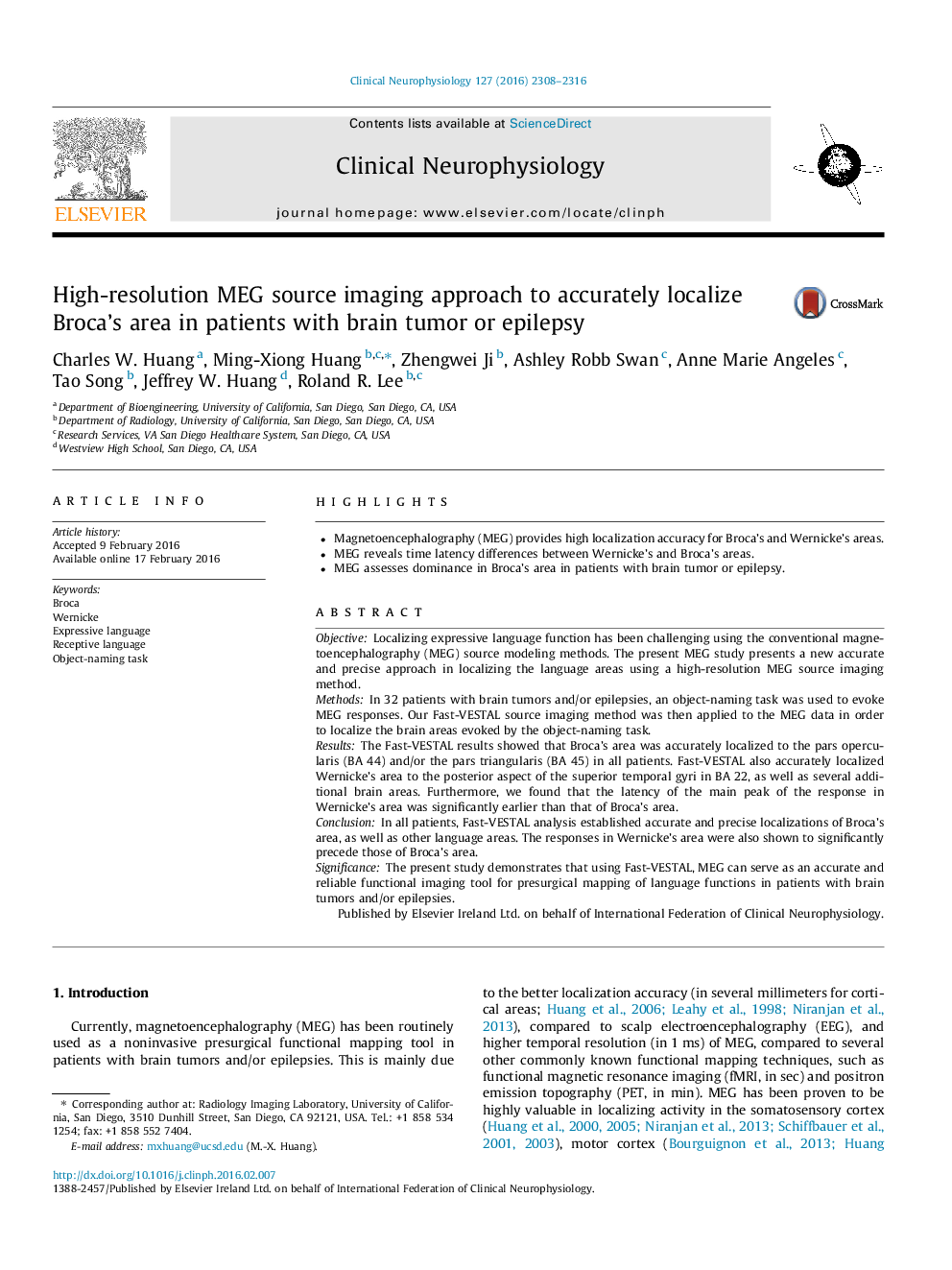| Article ID | Journal | Published Year | Pages | File Type |
|---|---|---|---|---|
| 6007456 | Clinical Neurophysiology | 2016 | 9 Pages |
â¢Magnetoencephalography (MEG) provides high localization accuracy for Broca's and Wernicke's areas.â¢MEG reveals time latency differences between Wernicke's and Broca's areas.â¢MEG assesses dominance in Broca's area in patients with brain tumor or epilepsy.
ObjectiveLocalizing expressive language function has been challenging using the conventional magnetoencephalography (MEG) source modeling methods. The present MEG study presents a new accurate and precise approach in localizing the language areas using a high-resolution MEG source imaging method.MethodsIn 32 patients with brain tumors and/or epilepsies, an object-naming task was used to evoke MEG responses. Our Fast-VESTAL source imaging method was then applied to the MEG data in order to localize the brain areas evoked by the object-naming task.ResultsThe Fast-VESTAL results showed that Broca's area was accurately localized to the pars opercularis (BA 44) and/or the pars triangularis (BA 45) in all patients. Fast-VESTAL also accurately localized Wernicke's area to the posterior aspect of the superior temporal gyri in BA 22, as well as several additional brain areas. Furthermore, we found that the latency of the main peak of the response in Wernicke's area was significantly earlier than that of Broca's area.ConclusionIn all patients, Fast-VESTAL analysis established accurate and precise localizations of Broca's area, as well as other language areas. The responses in Wernicke's area were also shown to significantly precede those of Broca's area.SignificanceThe present study demonstrates that using Fast-VESTAL, MEG can serve as an accurate and reliable functional imaging tool for presurgical mapping of language functions in patients with brain tumors and/or epilepsies.
